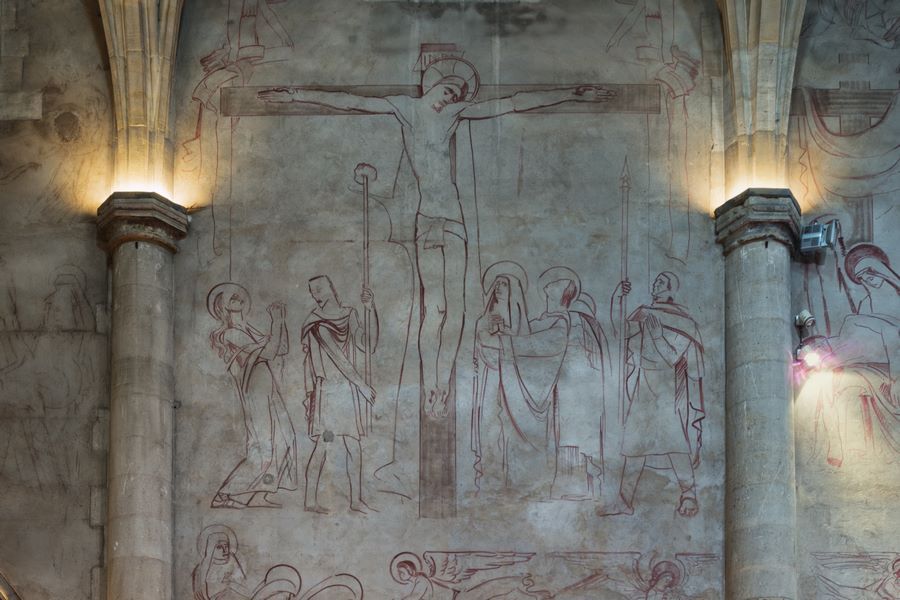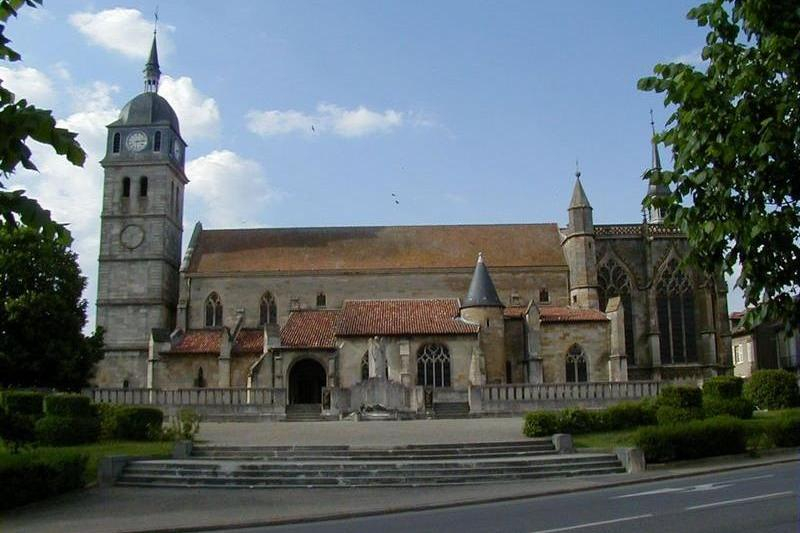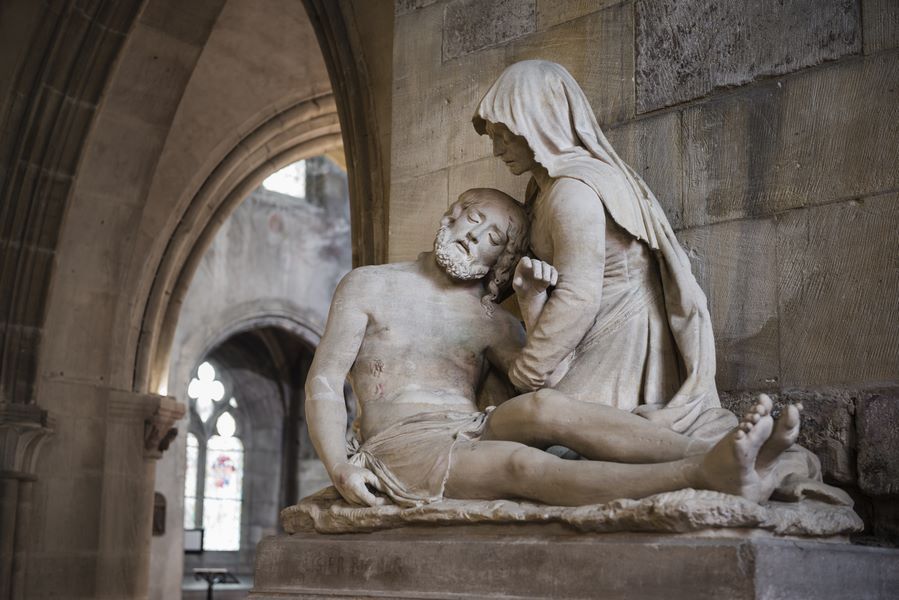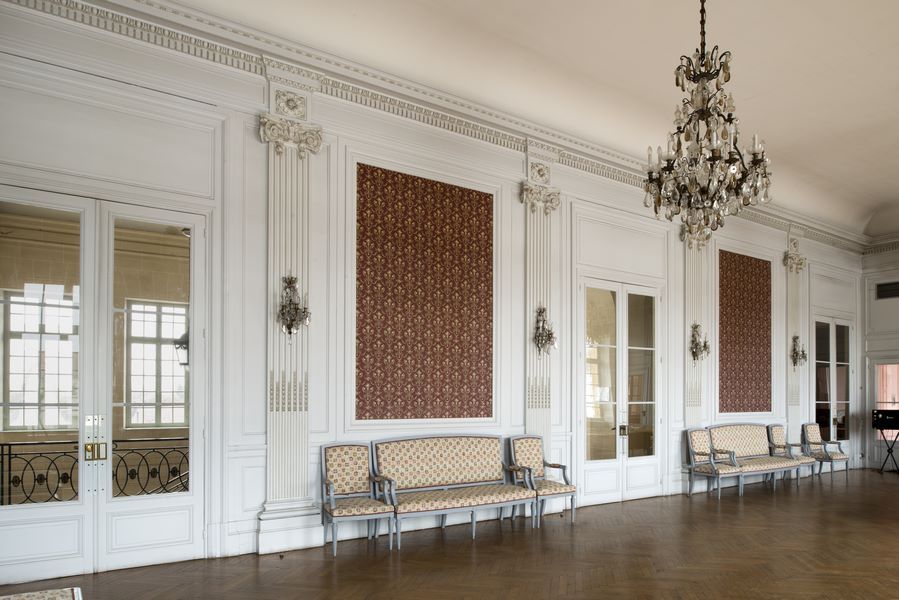Made up of 26 areas, the Pays d’Étain has a heritage rich in remarkable wash-houses, fountains and churches.
Including in Étain:
The Church of Saint Martin
Recognised as a historical monument in 1846, its size and architecture dominate the town of Étain.
The first shrine appears to have been built at Étain in the 8th century. A larger cut-stone building was constructed in the 12th century. After the central nave was built in the 13th and 14th centuries, Cardinal Huin rebuilt the chancel of his home church. This transformation from 1437 is still visible today.
The church was the first historical building in the region to be recognised as a historical monument in 1846. Unfortunately, the church was almost completely destroyed during the First World War. Only the outline of the chancel and the north wall of the nave remained. Reconstruction took 33 years of work, with many interruptions, from 1919 to 1952.
Things to see: the Untersteller Stations of the Cross, the Gruber brothers stained-glass windows and many works of art also recognised as Historical Monuments.


Useful information
- Open for visiting every morning from 9am to noon
- To visit in the afternoon book in advance by calling 03 29 87 20 80
The Ligier Richier trail and his “Pietà”
Ligier Richier trail
Born around 1500 at Saint-Mihiel, Ligier Richier was the greatest artist from Lorraine of the Renaissance. A tourist route exploring this exceptional sculptor’s work, from Bar-Le-Duc to Saint-Mihiel via Étain.
Find out more about the Ligier Richier trail
The Pietà
Located in the Chapel of the Sacred Heart at the Church of Saint Martin in Étain, the Pietà was recognised as a Historical Monument in 1905. This work depicts a life-size Virgin Mary holding the lifeless body of Jesus Christ on her knees.


Useful information:
- Open for visiting every morning from 9am to noon
- To visit the church in the afternoon book in advance by calling 03 29 87 20 80
Étain Town Hall
The town hall was totally destroyed during the First World War. From 1922 to 1926, the Nancy architect Joseph Hornecker led building work respecting the original design, in the 18th century style.
The interior was inspired by the Second French Empire era of the mid-nineteenth century with a vast Foyer, a majestic wrought-iron staircase and a magnificent Reception room.


Useful information:
The reception room is not open to visitors - Only the foyer is accessible, during the mayor’s office opening hours: Étain Mayor’s Office
Remarkable local heritage
Look at the map to see all the interesting sights in the Pays d’Étain area





 Contact
Contact


